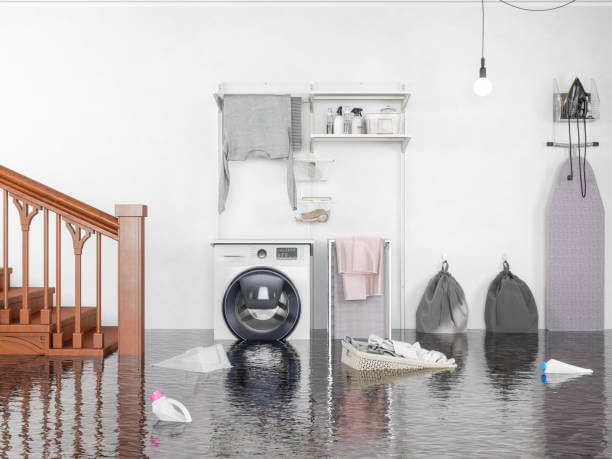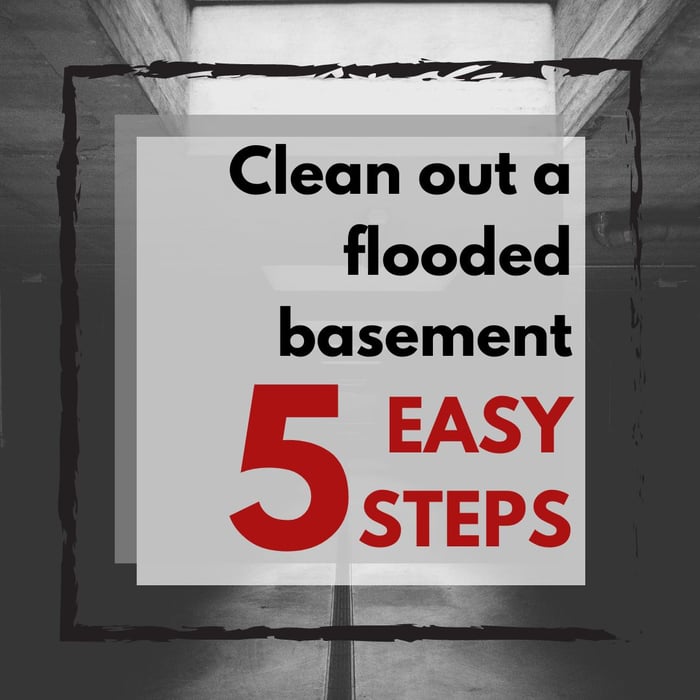A flood may do severe damage that necessitates thorough and rapid cleanup, whether it is brought on by a river overflowing its banks, a torrential downpour, or storm surge flooding.
This manual will show you how to clean up after a flood to avoid future damage to the home and offers advice for completing a secure evaluation of flood damage.
Reminder: Never enter a flood-affected zone that was evacuated till the area was given the all-clear by local authorities.
First examination and safety precaution
Houses that have been flooded pose a danger. It is likely that the water is contaminated.
-Inform your insurance provider of the catastrophe.
- If there are downed electrical wires outside your home, avoid walking through puddles or standing water.
- Before entering, inspect the exterior of the house. A dangerous and unsafe state inside may be indicated by apparent structural deterioration, such as foundation fractures.
- When you first go back home, make sure to switch off the gas and electricity.
- Have expert inspections of the water, gas, electric, and sewer lines performed as necessary.
- To estimate house damage, both to the building and to its contents, for insurance purposes, make a list and capture photos or videos.
- While handling anything, put on protective gear, strong waterproof boots, eye protection, and strong rubber gloves.
- Watch out for any snakes, insects, or other creatures that could be around or in your home.
- Do not yank on doors. The door can be swollen from the water, but it might also be supporting the rest of the building.
- To improve ventilation, open the windows.
- Use only battery-powered lighting.
- Never use a gas-powered generator indoors.

Take Contents Out to Save or Throw Away
Within 24 hours of the water receding, remove any water-damaged furniture, rugs, and bedding from the house. Most contents will likely be destroyed by flooding.
- Keep discarded items on site so the insurance assessor may inspect them.
- Due to contamination, replace any carpet and rugs that are damaged. Always replace the cushioning under your carpet.
- Throw away mattresses and upholstered furnishings.
- Before using any gas or electrical items that were flooded, a professional inspection is recommended.
- Furniture made of plastic, metal, and solid wood may be saved. Take outdoors to rinse off any muck, then clean, sanitize, and allow items to air dry gently out of the direct sun.
- Throw away all food items. If labels are removed, the can is cleaned, sanitized, and relabelled with the contents' expiration date, commercially sealed canned products may be recovered.
- In a frost-free freezer, pictures and essential documents can be frozen in plastic bags until they can be defrosted and cleaned, possibly by a specialist.
- To make room for cleaning the structure, all furniture and other belongings, both salvageable and to be thrown away, must be removed.
Clean the floors.
Use a shovel or other suitable equipment to remove any mud or silt before washing any hard surfaces with a garden hose. As soon as the water has subsided, cleanup should start to stop mold growth. Dehumidifiers and fans should be used throughout the house after the electricity is back on to hasten the drying process, which might take several weeks. In the weeks following the flood, actively manage the mold.
- After removing the carpet, padding, or other flooring, start drying the subfloor as soon as you can.
- If flooded for a long time, wooden subfloors would probably swell, and the damaged areas will need to be rebuilt.
- In general, wood flooring suffersr after being soaked in floodwater.
-Tile may be salvageable, but the subfloor has to be dried and examined for signs of water damage.
Tip: In the weeks that follow the flood, keep a close eye out for any indications of mold development. If required, use a mold remover on it.

Wash the Walls
To avoid odor, delay the formation of mold, and stop the deterioration of wall studs, open all flooded walls.
- Get rid of any baseboard trim.
- One foot above the water line, remove the drywall.
- To encourage airflow inside the wall, take into consideration removing a six-inch part at the ceiling level.
- Although plaster and paneling may still be used, it is crucial that air flow into wall cavities in order to dry the region.
- The interior of the wall should be cleared of any moist insulation.
- Wall studs should be cleaned, disinfected, and sprayed with a fungicide to control mold.
- Brick outside walls will need to be pressure cleaned, and if the wood or masonite siding is water-damaged, it may need to be replaced.
Clean the basement
Your home's basement will probably be the first area to become wet during a flood if it has one. Before drying the area, use a water pump to remove the water. Some things to think about when clearing up a flooded basement are as follows:
- To prevent structural damage, pump out flooded basements gradually at a rate of two feet of water each day. Basement walls might collapse if the water is quickly and totally drained out due to pressure from the outer soil that has been saturated with water.
- You can buy or rent a pump or wet/dry vacuum to get rid of the remaining water in the house.
- But, using a dehumidifier to remove moisture from the air and timber behind the walls is as crucial.
- Interior foundation walls must be cleaned, sterilized, and dried because concrete is a porous substance.
To make sure this is the las after flood cleaning you have to do, do yourself and your house a favour and consider getting Flood Barriers kit.
Easy to install and remove, those modern flood control solutions seal any passage of your house perfectly and make sure that not a drop of flood water can getinsidee and damage your belongings.
Contact Dam Easy today to learn more about flood barriers and other modern solutions to protect your home before the next flood season strikes!
Flood Barrier Door Dam - Ultimate Flood Gate

€779,00
DAM EASY® FLOOD GATE - DOOR DAM Floods are becoming more common around the world. What was once a 100-year phenomenon is now a seasonal trend that homeowners must deal with. That’s EXACTLY why you need this Dam Easy Flood… Read More



